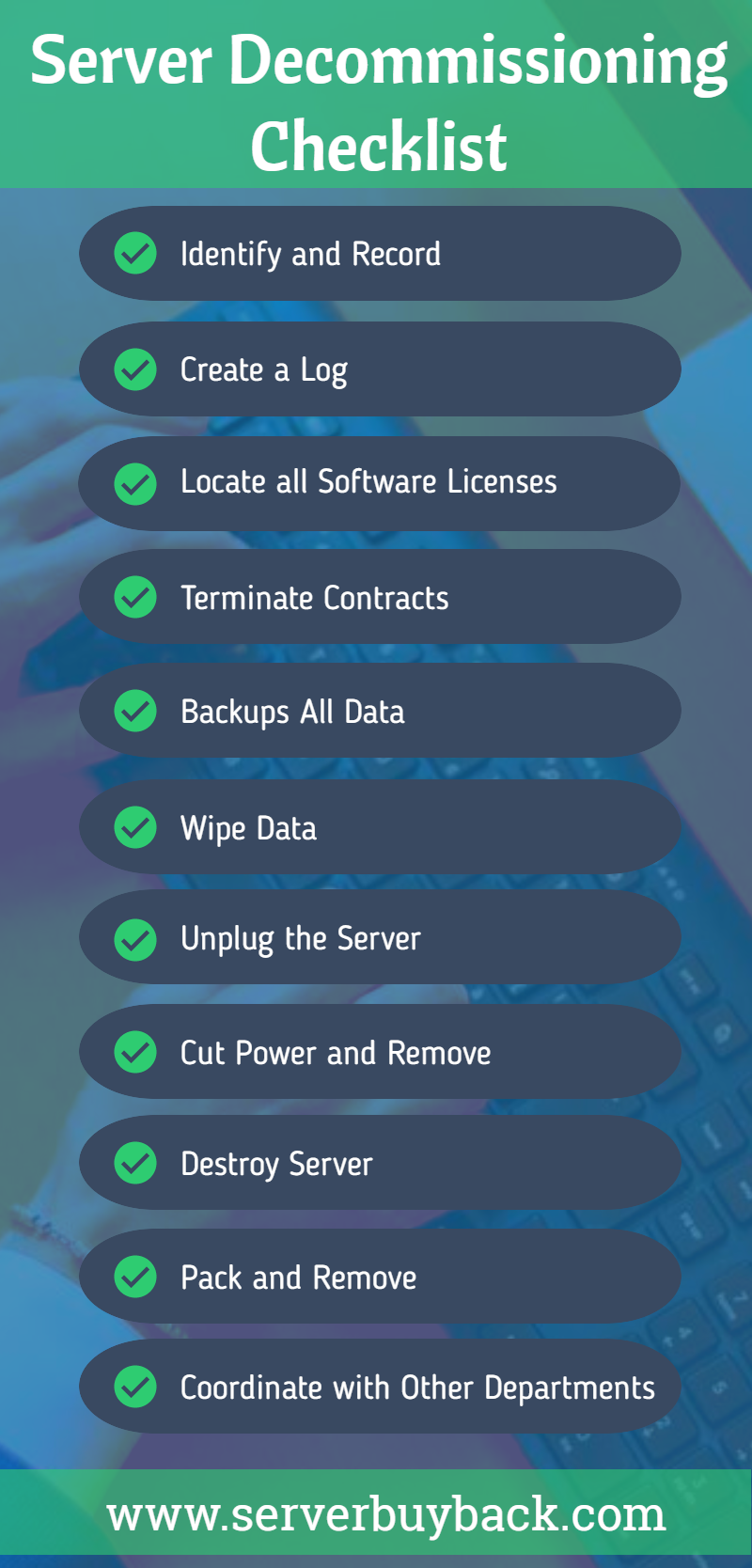When it’s time to retire a server, it pays to have a solid plan in place. Many data centers are used for heavily regulated fields. Auditors check records for decommissioning compliance. When a server is removed from service the process must be documented with decommissioning documents. The following steps can be used as a server decommissioning checklist.
1. Identify and Record
Find the servers in your facility that needs to be decommissioned. Record all necessary information and schedule the decommission.
2. Create a Log
Develop a comprehensive log of all actions performed during server decommissioning. It’s important that every step and compliance has been well-documented in preparation for potential audits.
3. Locate all Software Licenses
Locate and retain any and all software licenses for the servers.
4. Terminate Contracts
The server scheduled for decommissioning, any vendor maintenance for the associated hardware or software will be unnecessary.
5. Backups All Data
It’s likely that there will be information within the server that needs to be retained. Create a backup, and verify that all data was successfully backed up prior to decommissioning.
6. Wipe Data
If you plan to utilize data erasure software, this should be done while the servers are still within its rack. Be sure to follow’s all instructions from your chosen tool. The primary benefit of data wiping is that erased data is unrecoverable and therefore more secure than alternative methods.
7. Unplug the Server
Disconnect the server from the network, then remove all subnets, access control lists (ACLs), and firewalls. These processes can be quite complex and even lead to complications for your greater network, so be sure to work with Expert partners that can assist with each step.
8. Cut Power and Remove
Power down the servers and remove it from its rack.
9. Destroy Server
If you’ve chosen to forego the use of data wiping software, you will need to physically destroy the storage systems of your server via shredding, degaussing, or another approved method of destruction. It will be beneficial to work with an experienced ITAD for this process.
10. Pack and Remove
It’s time to place the server on a pallet and remove it from your facility. This can be done in a few ways depending on your plan for the server. Your organization could repurpose the equipment, sell it, or dispose of it in some other fashion.
11. Coordinate with Other Departments
Reach out to every department within your organization that needs to be kept in the loop about the decommissioning process. While this Server decommissioning checklist only features the high-level step that needs to be considered, this should give you a general framework for what areas will require the most time, consideration, and resources. Be sure to reference this server decommissioning checklist throughout your planning and strategy phases to help you develop a realistic timeline and budget.

